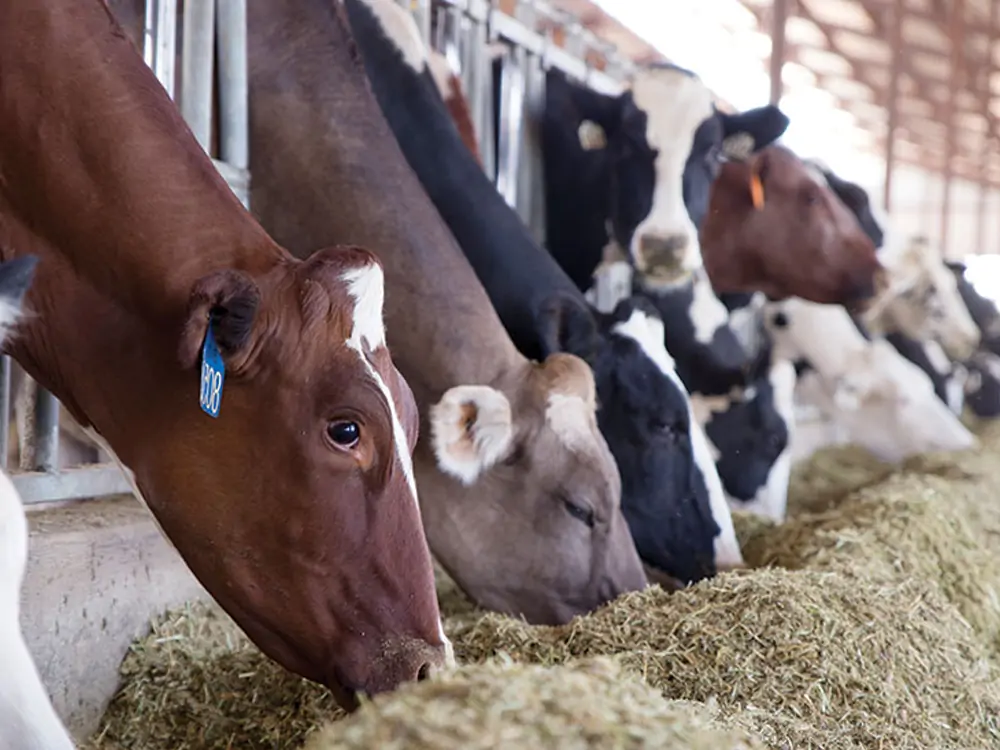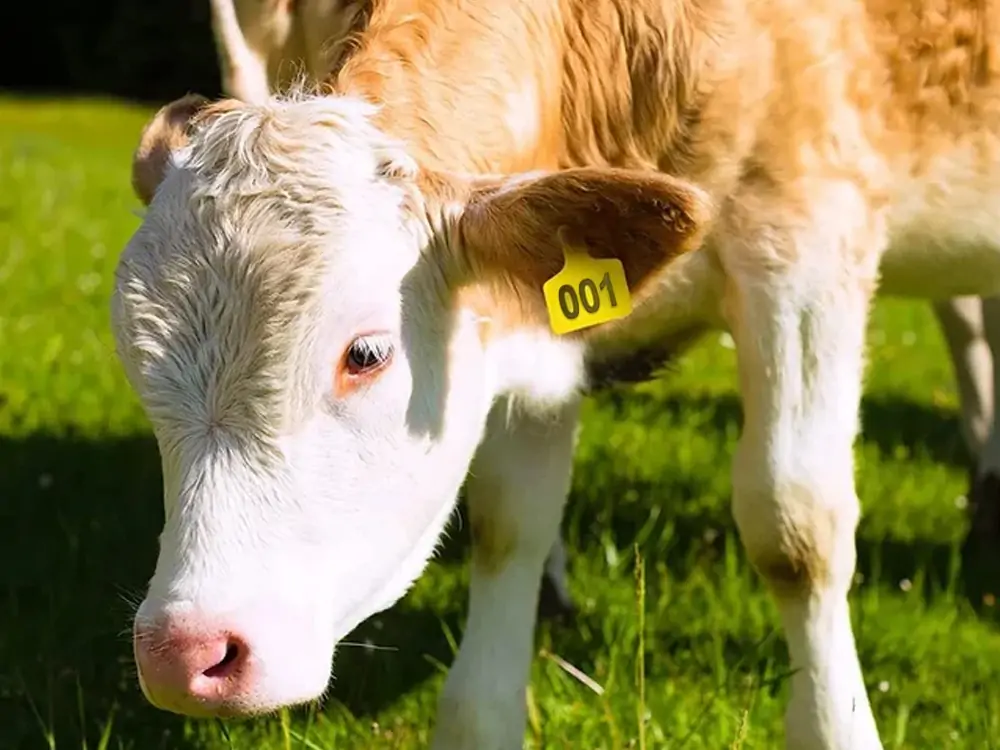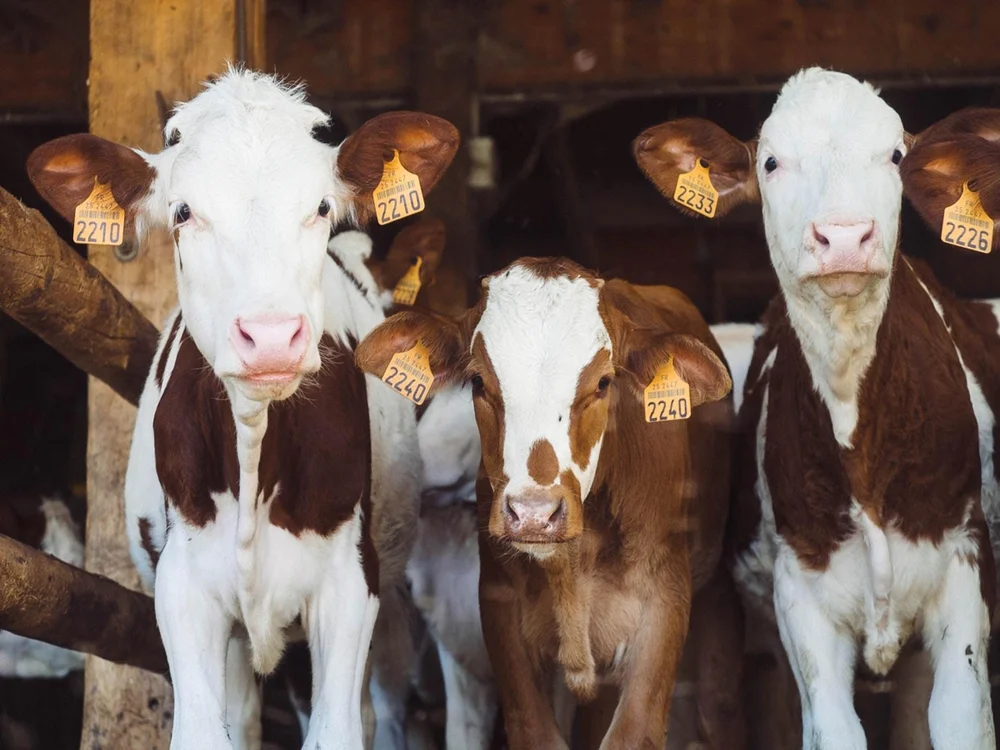Imagina que tienes un gran rebaño formado por muchas vacas y terneros. El color de muchas reses es el mismo. ¿Cómo podría identificar un ganado concreto? Esta identificación de los animales puede convertirse en un quebradero de cabeza. Aquí es donde entra en juego el sistema de numeración de crotales para ganado.
Con este sistema de numeración, podrás tener toda la información sobre tu ganado. Sin embargo, muchas personas lo toman a la ligera y lo subestiman. Como resultado, tienen que enfrentarse a mucha confusión en cuanto a la identificación.
Por lo tanto, esta guía tratará sobre diferentes métodos de numeración. Así pues, ¡empecemos!
¿Qué es la numeración de las marcas auriculares?

La numeración de las marcas auriculares es un método de identificación del ganado. Los crotales se colocan en la oreja del animal y contienen números específicos. El propietario puede llevar el registro e identificar rápidamente al ganado basándose en estos números.
Estos números son necesarios para llevar un registro del ganado. Por ejemplo, un ganadero puede tener más de 100 vacas. ¿Cómo identificaría a cada una de ellas? Una vaca puede tener problemas médicos, por lo que sería imposible encontrarla una vez que entrara en el rebaño.
Lo mismo ocurre con el ternero. Imagina que tienes un rebaño y falta una vaca. ¿Cómo sabrías qué vaca falta? ¿Cómo la encontrará? Aquí es donde resulta útil este sistema de etiquetado. El propietario puede colocar una etiqueta en la oreja de la vaca.
El número de la etiqueta es específico para cada vaca y ternero. Las etiquetas pueden ser de distintos colores y tamaños. También se utilizan distintos materiales para fabricarlas. A algunos propietarios también les gusta que las etiquetas lleven el nombre de la granja y del propietario.
¿Cómo funciona el sistema de numeración de las marcas auriculares del ganado?
El sistema de numeración es muy sencillo. Se coloca una etiqueta en la oreja del ternero. Esta etiqueta llevará el número que usted elija. Tendrá que llevar un libro de registro para añadir ese número a su libro. Por ejemplo, le das a la etiqueta el número 001. Este será el número para ese ternero. Este será el número para ese ternero.
Supongamos que el ternero con el número 001 ha enfermado. Quieres separarlo de los demás terneros para evitar que se propague la enfermedad. Verás la etiqueta pegada en la oreja del ternero. De este modo, podrá identificar al ternero y separarlo del rebaño. No sólo para enfermedades, sino que estos números también pueden ayudarte a encontrar a tu animal desaparecido.
Métodos para el sistema de numeración de las marcas auriculares del ganado vacuno

No existe una regla fija para los sistemas de numeración de las orejas del ganado. Se trata de gustos y elecciones personales. Puede adoptar el método de numeración que considere más sencillo. No obstante, en la sección siguiente se indican los cuatro métodos de numeración más recomendados.
1. Numeración secuencial
Este sistema de numeración es sencillo de seguir. Puede utilizar un conjunto de números de tres o cuatro cifras. Puede ser cualquier cosa como 001 o 0001. Puede añadir un dígito con cada nueva vaca de su ganado.
Por ejemplo, si tiene una vaca, su número de etiqueta es 001. Si compra una segunda vaca, se le asignará el 002, y así sucesivamente. Si compra una segunda vaca, tendrá la etiqueta 002, y así sucesivamente. Cuatro dígitos suelen ser la norma. Este método es fácil e ideal para rebaños pequeños en los que sólo se necesita un poco de información.
2. Numeración secuencial por años
Este método de etiquetado también se conoce como sistema de numeración combinada. Es similar a la numeración secuencial. La única diferencia es que este método utiliza el año de nacimiento de los terneros. Por ejemplo, los terneros nacidos en 2023 serán numerados 2023001, 2023002. Esta es una excelente manera de llevar la cuenta de los terneros nacidos en el mismo año.
Los terneros nacidos en 2024 se numerarían 2024001, 2024002, y así sucesivamente. Así, incluso después de varios años, podrá saber cuándo nació un ternero concreto. Este método puede ser beneficioso para rebaños grandes. Es similar a la numeración secuencial pero añadiendo años.
3. Sistema de numeración secuencial de razas
Como sabe, en las explotaciones ganaderas puede haber diferentes razas. Cada una de esas razas tiene características y valores diferentes. Puede etiquetar esos terneros según el nombre de su raza y los números secuenciales. Este método le ayudará a conocer el tipo de raza de los terneros.
Por ejemplo, usted tiene un ternero de raza Angus. Puede numerar este ternero con A001. En este número, la "A" representa la raza Angus. Del mismo modo, puede llamar A002 al segundo ternero de raza Angus. Y así sucesivamente. Por otro lado, si tiene terneros de raza Hereford, puede llamarlos H001, H002, etc.
4. Numeración por colores
Este sistema de numeración por colores es un método de identificación más ignorado. Generalmente, se utilizan dos colores en las etiquetas: rojo y azul. Estas etiquetas de color contienen números. La gente utiliza etiquetas de color rojo para las hembras y azul para los terneros machos.
Este método les ayuda a comprender el sexo a distancia. Identificar el sexo de las reses que están demasiado lejos puede ser un reto. Leer los números y verlos en el libro de registro lleva tiempo. Por eso, utilizar estas etiquetas de colores marca la diferencia.
5. Numeración por presas
Este método es esencial cuando se necesita comprender la relación madre-hija. Por ejemplo, supongamos que tiene una vaca y la etiqueta con una numeración secuencial. Supongamos que tiene el número 005. Al tener el número secuencial 005, esta vaca da a luz un ternero.
Este ternero se numerará con un número adicional y el número de la madre. Por ejemplo, el primer ternero se numerará como 005-1. Del mismo modo, el segundo ternero de esa vaca se numerará como 005-2. La lista continuará. Esto indica que ese ternero concreto ha nacido de esa vaca concreta.
6. Numeración alfanumérica
No es un método beneficioso. Sin embargo, muchos propietarios de granjas utilizan este método debido a su versatilidad. En este método, tendrá que utilizar algunas letras junto con los números. Puedes elegir cualquier letra al azar. Por ejemplo, podría ser como YZ002 O XY008.
Muchos propietarios utilizan la primera letra de su nombre. Esto les da una identidad única en la etiqueta. Supongamos que la granja se llama Taylor Farm. Entonces, las etiquetas serían como TF001. Además, también puede utilizar la primera letra de su nombre. No hay ninguna restricción. Tendrá que llevar un registro de cada número en su libro.
Consejo rápido:
- Cuando numere su ganado, utilice sólo métodos.
- Absténgase de mezclar números diferentes, ya que le confundiría.
- Si utiliza una numeración secuencial, cíñase a todas sus reses. Aunque no es una norma de obligado cumplimiento, le facilitará las cosas.
¿Existen reglas para el sistema de numeración de las marcas auriculares?

No, no hay ninguna regla rígida. El sistema numérico depende en gran medida de las elecciones y preferencias individuales. Se trata de utilizar números, cifras o símbolos específicos para identificar a los animales. No obstante, asegúrate de utilizar un único método de numeración para garantizar la coherencia.
La coherencia es vital, y el método que utilice no importa. Por ejemplo, si ha elegido un método secuencial sencillo, debe nombrar a todos los terneros utilizando este método. Si saboteas la coherencia, seguir la pista a los animales será difícil.
Algunas personas también utilizan diferentes métodos a la hora de numerar las pantorrillas. No es recomendable hacerlo. Es más complicado y desafiante llevar un registro de los animales, y te confundirás rápidamente. Por lo tanto, cíñete a cualquiera y todo irá bien.
Preguntas frecuentes
¿Con qué frecuencia deben sustituirse los crotales?
Depende del estado de la etiqueta. Si el número de la etiqueta se desvanece, deberías plantearte cambiarla. Recuerda que las etiquetas suelen durar años, así que no debes preocuparte.
¿Puedo utilizar el mismo sistema de numeración para distintos tipos de ganado?
Sí, se adopta la misma numeración para los distintos tipos de ganado. No hay una regla fija para numerar los animales. Sin embargo, lo mejor es que lleves un registro de todos los números que asignes al ganado. Te ayudará a evitar confusiones.
¿Qué materiales son los mejores para los crotales de ganado?
Depende de tu elección personal. El plástico es más barato, pero su durabilidad es cuestionable. Una etiqueta de metal es duradera, pero cara. Así que lo mejor es que elijas en función de tus necesidades.
¿Existe un tamaño recomendado para los crotales de ganado?
No, no hay un tamaño recomendado para las etiquetas. Sin embargo, lo ideal sería utilizar una etiqueta pequeña para los terneros pequeños y más grandes para las vacas.
Conclusión
No es erróneo afirmar que la numeración de las marcas auriculares del ganado es beneficiosa. Ayuda a identificar rápidamente a los animales y a los terneros. Este sistema de numeración es especialmente importante para quienes tienen grandes rebaños. Suelen tener problemas con la identificación del ganado. Por eso, el uso de estos sistemas de numeración puede facilitarles la vida.
